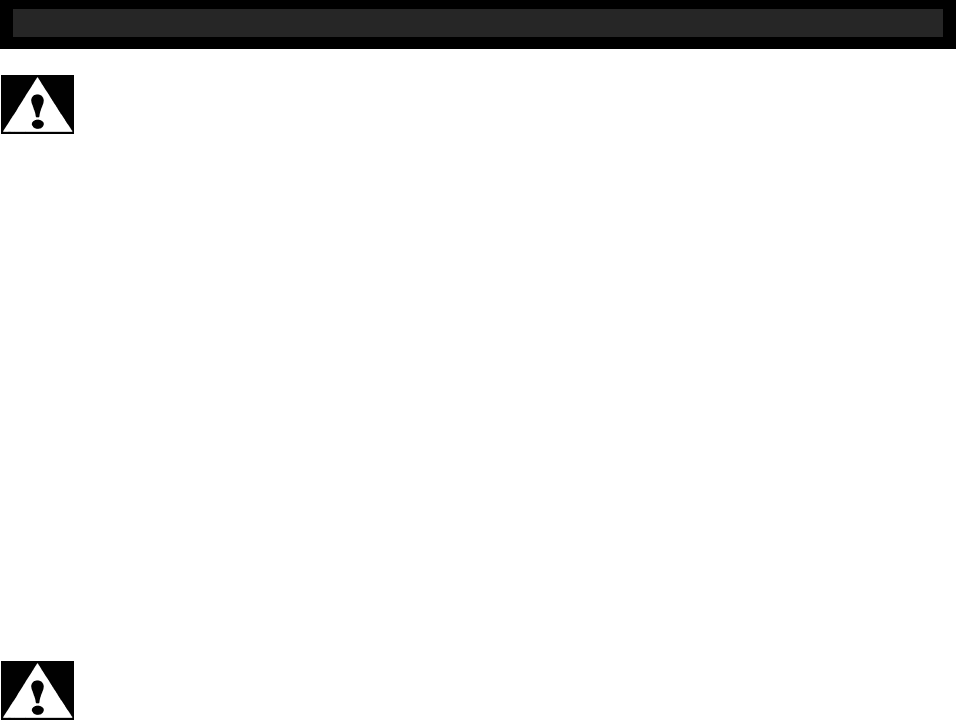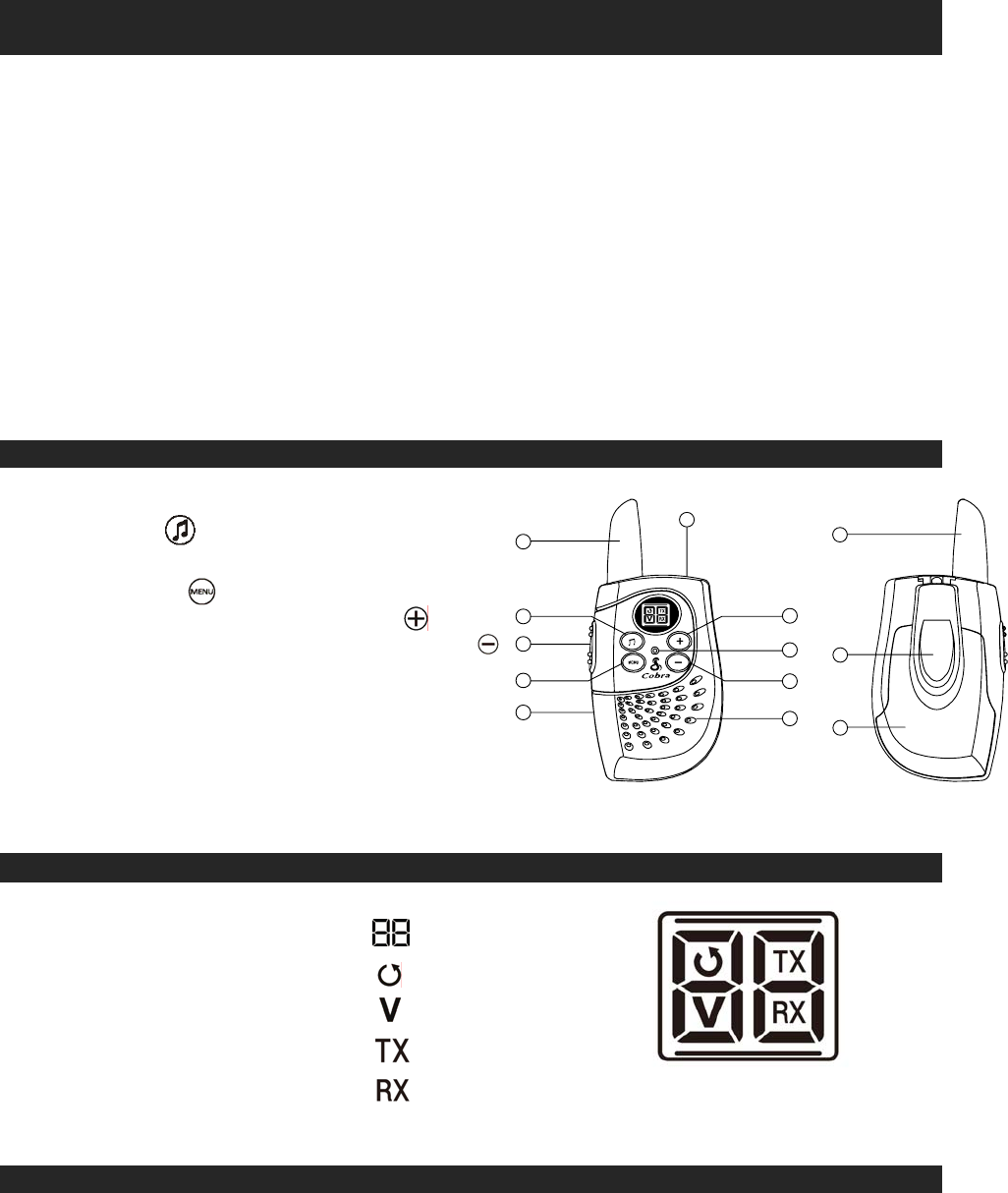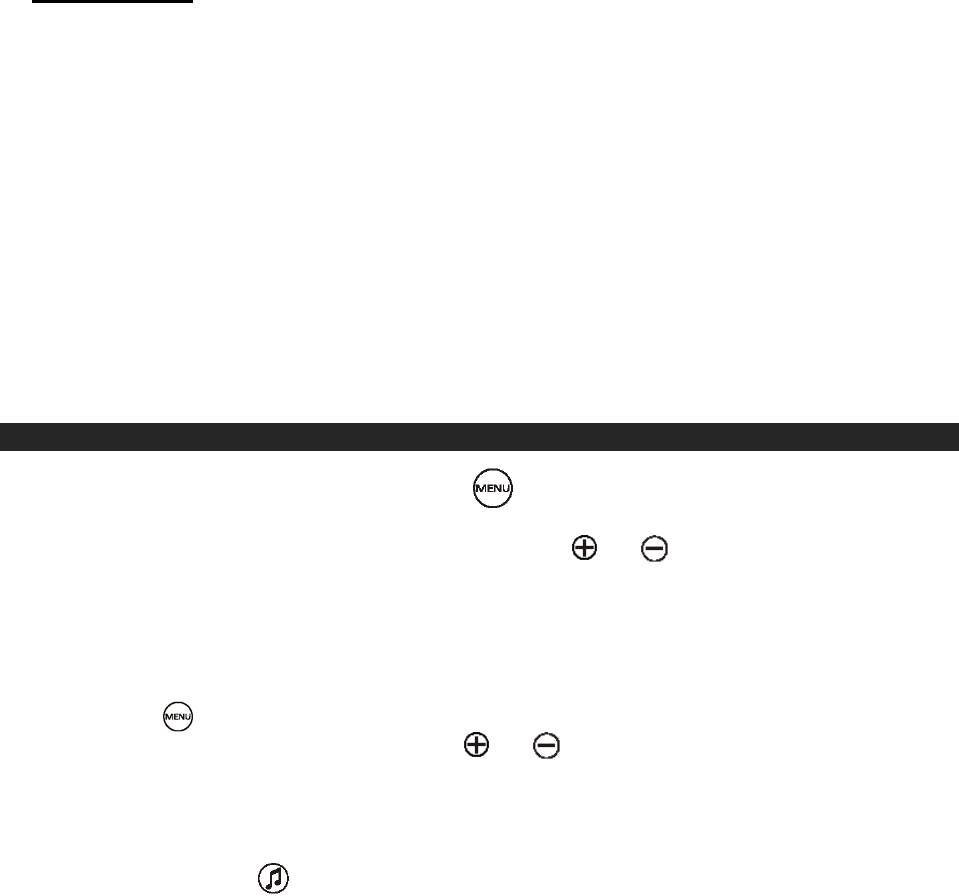Altis Technology SHAFJ GMRS/FRS Walkie Talkie Two-way Radio User Manual SH160 User Guide draft 090116
Altis Technology (Hong Kong) Ltd. GMRS/FRS Walkie Talkie Two-way Radio SH160 User Guide draft 090116
User Manual
SH160
USER GUIDE

1
This device complies with part 15 of the FCC Rules. Operation is subject to the
following two conditions: (1) This device does not cause harmful interference,
and (2) This device must accept any interference received, including
interference that may cause undesired operation.
Your wireless handheld portable transceiver contains a low power transmitter.
When the Push-to-talk (PTT) button is pushed it sends out radio frequency (RF)
signals.
This device is authorized to operate at a duty factor not to exceed 50%.
In August 1996, the Federal Communications Commission (FCC) adopted RF
exposure guidelines with safety levels for hand-held wireless devices.
WARNING: Adjustment to this unit or replacement of any transmitter
component (crystal, semiconductor, etc.) to this unit could result in a violation of
the rules.
NOTE: This equipment has been tested and found to comply with the limits for
a Class B digital device, pursuant to Part 15 of the FCC Rules. These limits are
designed to provide reasonable protection against harmful interference in a
residential installation. This equipment generates, uses and can radiate radio
frequency energy and, if not installed and used in accordance with the
instructions, may cause harmful interference to radio communications.
However, there is no guarantee that interference will not occur in a particular
installation. If this equipment dose cause harmful interference to radio or
television reception, which can be determined by turning the equipment off and
on, the user is encouraged to try to correct the interference by one or more of
the following measures:
● Reorient or relocate the receiving antenna.
● Increase the separation between the equipment and receiver.
● Connect the equipment into an outlet on a circuit different from that to which
the receiver is connected.
● Consult the dealer or an experienced radio/TV technician for help.
This radio operates on CH 1~14 and CH 15~22. If you intend to operate the
radio on CH 15 to CH 22, you should obtain a license before operating.
For information, please click in
http://www.fcc.gov/wtb/prs/genmbl.html
SAFETY INFO
R
MATION
IMPORTANT FCC LICENSING INFORMATION

2
WARNING
● Never apply any DC power to battery terminals.
● Do not attempt to charge any non-rechargeable batteries.
● Do not attempt to open the unit case.
● No user serviceable parts inside.
● Refer servicing to qualified service personnel.
● Do not modify or attempt to adjust the transceiver for any reason.
● Avoid extremes in exposure to water, heat and cold. This transceiver is
weather resistant but not waterproof.
● Do not expose the transceiver to long periods of direct sunlight, nor place the
transceiver close to heating appliances.
● Do not place the transceiver in excessively dusty areas, humid areas, wet
areas, nor on unstable surfaces.
● If smoke is detected coming from the transceiver, immediately switch OFF
the power and remove the batteries from the transceiver. Contact your dealer.
CAUTION
● Use Batteries only for the power of the unit, Alkaline or Rechargeable
batteries.
● To maintain compliance with the FCC's RF exposure guidelines, hold the
transmitter and antenna at least 1 inches (2.5 centimeters) from your face and
speak in a normal voice, with the antenna pointed up and away from the face. If
you wear the handset on your body while using the headset accessory, use
only the manufacturers supplied bell clip for this product and ensure that the
antenna is at least 1/2 inch from your body when transmitting.
● Use only the supplied antenna. Unauthorized antennas, modifications, or
attachment, could damage the transmitter and may violate FCC regulations.
PRECAUTIONS DURING OPERATION

3
FEATURES
• Range: Up to 2 Miles
• 22 Channels
• Multifunction LCD Display
• Auto Squelch Control
• Auto Power Saver Mode
• Talk Confirmation Tone/Roger Beep
• Call Function
• Monitor Function
• Low Battery Alert
• Removable Belt Clip
• Micro-USB Charging Function
• Microphone Jack
CONTROLS AND INDICATORS
1. Antenna
2. Call Button
3. Push-To-Talk (PTT) Button
4. Menu Button
5. Volume Up/Channel Up Button
6. Volume Down/Channel Down Button
7. Built-in Speaker
8. Built-in Microphone
9. Battery Door (on back)
10.Belt Clip (on back)
11.Microphone Jack
12.Micro-USB Charging Port
LCD DISPLAY
1. Volume/Channel Digit
2. Scan Icon
3. Volume Icon
4. Transmit Icon
5. Receive Icon
BATTERIES INSTALLATION
Each FRS Radio operates on three ‘AAA' size batteries.
1. Remove the Belt Clip (#10) by pressing on the release tab. Remove the
Battery Door (#9) by loosening the screw and unclipping the door
1
9
10
1
2
3
4
12
5
11
8
6
7

4
2. Following the polarity diagram shown inside the battery compartment, insert
three ‘AAA' size batteries (not included). Replace the Battery Door (# 9),
replace the Belt Clip (#10).
IMPORTANT: Be sure that the batteries are installed correctly.
Wrong polarity may damage the unit.
Note:
1. For best performance and longer operating time, we recommend the use
of alkaline-type batteries.
2. Do not mix old and new batteries.
3. Do not mix alkaline, standard (carbon-zinc) or rechargeable
(nickel-cadmium) batteries.
4. If the unit is not to be used for an extended period of time, remove the
batteries. Old or leaking batteries can cause damage to the unit and
will void the warranty.
5. Do not dispose of batteries in fire, batteries may explode or leak.
6. When the Low Battery Icon appears in the LCD Display, replace all 3
batteries with new ones.
BASIC OPERATION
1. Turn on the FRS Radio by pressing until a channel number appears and
a confirmation tone is heard.
2. Adjust to the desired volume level using the or Buttons. The display
will flash and the letter “v” will show when volume adjust is active. A
confirmation beep will be heard and the level of the beeps will increase or
decrease as the volume is adjusted.
Note: The LCD Display will revert back to channel mode if no button is
pressed within 5 seconds.
3. Press the Button to activate the channel select mode. The channel
display will begin flashing. Use the or Buttons to change channels.
4. Press the PTT button to confirm your selection.
Note: Both units must be set to the same channel number to communicate
with each other.
5. The Call Button can be used to send a ring tone to another party on the same
channel. Press the Button once. The ring tone will be heard on both units
and will sound for about 1.5 seconds.
6. Press and hold the PTT Button to communicate with another party on the
same channel. Hold the radio 2-3 inches from you mouth and speak clearly
into the microphone (#8).
Note: If the PTT Button is depressed for more than 1 minute, a tone will be
generated and will sound continuously until the PTT Button is released.
7. When transmission is complete, release the PTT Button and listens for a
reply. A Talk Confirmation/Roger Beep tone will be heard when the PTT
Button is released. This lets the person you are talking to that you have
finished talking and it is their turn to speak.
8. The FRS Radio is equipped with auto squelch, which will automatically block
out any unwanted noise or static due to terrain conditions or if you have

5
reached your range limit. You can disable to automatic squelch by pressing
the Button 3 times. Static will be heard along with any distant
transmission you may be receiving. Press the Button again to go back to
the automatic squelch mode.
9. Turn off the FRS Radio by pressing and holding the Button until a beep is
heard and the display turns off.
SCANNING CHANNELS
You can use the scanning feature to monitor channels or to find someone in
your group who has accidentally changed channels.
1. Press the Button twice. The Scan icon “ ” appears with “Y” or “-”
flashing in the display.
2. Press either or until “Y” displays and press PTT to turn scanning
on.
3. When the radio detects channel activity, it stops scanning and you can
hear the transmission. Press PTT to respond within 5 seconds.
4. If the scanning stops on a channel that you don’t want to listen to, briefly
press the or Button to resume scanning to the next active channel.
5. To turn scanning off, press the Button twice followed by pressing
either or until “-” displays. Press PTT to confirm.
6. Turn off the FRS Radio by pressing and holding the Button until a beep
is heard and the display turns off.
NOTES FOR GOOD COMMUNICATIONS
1. Your FRS Radio uses 22 channels that are shared on a “take turns” basis.
This means other groups may be talking on any of the channels. A common
code of ethics/courtesy is to switch to another vacant channel and not to
attempt to talk over someone who is already using the channel you first
selected.
2. Your FRS Radios have been designed to maximize performance and
improve transmission range in the field. To avoid interference, it is
recommended that you do not use the units closer than 5 feet apart.
3. For best transmission results, always keep your mouth about 2-3 inches
from the Microphone and speak slowly and clearly in a normal voice.
CARE AND MAINTENANCE
1. Clean your unit with a damp (never wet) cloth. Solvent or detergent should
never be used.
2. Avoid leaving your unit in direct sunlight or in hot, humid or dusty places.
3. Keep your unit away from heating appliances and sources of electrical noise
such as fluorescent lamps or motors.
REVELANT GUIDELINES AND STANDARDS

6
1. Technical Regulations of Part 15 and 95 of the FCC Rules.
2. Type Acceptance Requirements of Part 2 of the 47CFR Regulations.
CARE AND SAFETY
To assure optimal radio performance and to ensure RF energy exposure is
within the guidelines of the above standards, the following operating
procedures should be observed:
FOR PORTABLE 2-WAY FRS RADIOS
• When transmitting with a portable radio, hold radio in a vertical position with
its microphone 1-2 inches away from your mouth. Keep antenna at least 1
inch from your head and body.
• If you wear a portable radio on your body, ensure the antenna is at least 1
inch from your body when transmitting.
ELECTRIOMAGNETIC INTERFERENCE/COMPATIBILITY
Most electronic devices are susceptible to electromagnetic interference (EMI) if
inadequately shielded, designed or otherwise configured for electromagnetic
compatibility.
• Turn off your radio in any facilities where posted notices instruct you to do so.
Hospitals or health care facilities may be using equipment that is sensitive to
external RF energy.
• Turn off your radio when on board aircraft when instructed to do so. Any
use of the radio must be in accordance with airline regulations or crew
instructions.
CAUTION
Damaged Antenna
Do not use any radio with a damaged antenna. If a damaged antenna comes
in contact with the skin, a minor burn may result.
Batteries
Do not short circuit exposed terminals of any batteries with any conductive
materials. In doing so, the material may become quite hot and cause property
damage and/or body injury such as burns.
WARNING
Parts Replacement or Substitution
Replacement or substitution of parts other than those recommended by
Spectra® may cause a violation of the technical regulations of part 95 of the
FCC Rules, or violation of Type Acceptance requirements of Part 2 of the FCC
7
Rules.
For Vehicles with an Air Bag
Do not place a portable radio in the area over an air bag or in the air bag
deployment area. Air bags inflate with great force. If a portable radio is
placed in the air bag deployment area and the air bag inflates, the radio may be
propelled with great force and cause serious injury to occupants of vehicle.
Potentially Explosive Atmospheres
Turn your radio off when in any area with a potentially explosive atmosphere,
unless it is a type especially qualified for such use. Sparks in such areas
could cause an explosion or fire resulting in body injury or even death.
Batteries
Do not replace or charge batteries in a potentially explosive atmosphere.
Contact sparking may occur while installing or removing batteries and cause an
explosion.
Blasting Caps and Areas
To avoid possible interference with blasting operations, turn your radio off near
electrical blasting caps or in a “blasting area” or in areas posted:” Turn off
2-way radio”. Obey all signs and instructions.
Note: Areas with potentially explosive atmospheres are often, but not always,
clearly marked. They include fuelling areas such as below deck on boats, fuel
or chemical transfer or storage facilities; areas where the air contains
chemicals or particles, such as grain, dust, or metal powders; and any other
area where you would normally be advised to turn off your vehicle engine.
Printed in China

FRS/GMRS Frequency Allocation and Compatibility
Important: Please note that Cobra GMRS models with 15 Channels may designate different
channel numbers for the same frequency. For example, a Cobra 15 Channel GMRS model would
need to be tuned to Channel 11 in order to communicate with a 22 Channel GMRS tuned to
Channel 15. Please refer to the chart below for channel/ frequency number compatibility.
A = Channel No. for 22 Channel FRS/GMRS Models
B = Channel No. for 15 Channel GMRS Models
C = Type of Radio Service
D = Frequency in MHz
A B C D
1 1 FRS/GMRS 462.5625
2 2 FRS/GMRS 462.5875
3 3 FRS/GMRS 462.6125
4 4 FRS/GMRS 462.6375
5 5 FRS/GMRS 462.6625
6 6 FRS/GMRS 462.6875
7 7 FRS/GMRS 462.7125
8 FRS 467.5625
9 FRS 467.5875
10 FRS 467.6125
11 FRS 467.6375
12 FRS 467.6625
13 FRS 467.6875
14 FRS 467.7125
15 11 GMRS 462.5500
16 8 GMRS 462.5750
17 12 GMRS 462.6000
18 9 GMRS 462.6250
19 13 GMRS 462.6500
20 10 GMRS 462.6750
21 14 GMRS 462.7000
22 15 GMRS 462.7250
LICENSING
For Products Used in the U.S.A.
FCC Licensing Required This two-way radio operates on GMRS (General Mobile Radio Service)
frequencies which require an FCC (Federal Communications Commission) license. A user must be
licensed prior to operating on Channels 1 through 7 or 15 through 22, which comprise the GMRS
channels of this radio. Serious penalties could result for unlicensed use of GMRS channels, in
violation of FCC rules. Operation of this radio is subject to additional rules specified in 47 C.F.R.
Part 95.
Licensed users will be issued a call sign by the FCC, which should be used for station identification
when operating this radio. GMRS users should also cooperate by engaging in permissible
transmissions only, avoiding channel interference with other GMRS users, and being prudent with

the length of their transmission time.
For licensing information and application forms, please call the FCC Hotline at 800-418-FORM.
Request form #159 and form #605. Questions regarding the license application should be
directed to the FCC at 888-CALL-FCC. Additional information is available on the FCC’s website at
www.fcc.gov.
Channel 1 through 7 and channels 8 through 14 comprise the FRS (Family Radio Service). No
license is required to operate on the FRS.